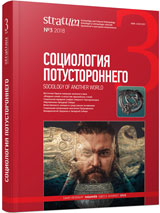Лев в тени Человека — повседневная реальность Юго-Восточной Европы в голоцене
Lion in the Shadow of Man — the Everyday Reality of South-Eastern Europe in the Holocene
Author(s): Elena P. SekerskayaSubject(s): History, Archaeology, Geography, Regional studies, Historical Geography, Environmental Geography, Ancient World
Published by: Издательский дом Stratum, Университет «Высшая антропологическая школа»
Keywords: South-Eastern Europe; North Black Sea region; Lower Danube; Holocene; lion; archeozoology
Summary/Abstract: The article is devoted to analysis of the lion bones from the Novoselskoe II hillfort (the left Bank of the Lower Danube) of the Hallstatt epoch. Found was a part of the right branch of the lower jaw and two isolated left premolars. The jaw belonged to a fairly small lion, probably a female. The distinctive features of this specimen are: a small diastema and small crowns Pm3 and Pm4. Finding the lions jaw along with the bones of other animals and traces of cutting tools present on it can be interpreted in favor of the use of lions meat in nutrition.The area of Lower Danube with its variety of microlandscape zones, vegetation and fauna is a suitable habitat for lions. It is possible that there was a small population of lions surviving here from the Eneolithic to the beginning of the I millennium BC. The Novoselskoe II hillfort is currently the 10th point with finds of lion’s bones and the extreme south-western point on the territory of modern Ukraine where the lion from Holocene is recorded.Because of their relatively small numbers, the animals could not be a constant prey to hunters. However, the population was hunting the lion in order to protect the herd of domestic animals and to obtain valuable trophies. Evidence of such hunting exists in the form of some individual, extremely rare finds of lion bones among archaeozoological materials of the Eneolithic settlements — Early Iron Age in the North Black Sea region and the Balkans.
Journal: Stratum plus. Археология и культурная антропология
- Issue Year: 2018
- Issue No: 3
- Page Range: 313-322
- Page Count: 10
- Language: Russian
- Content File-PDF

